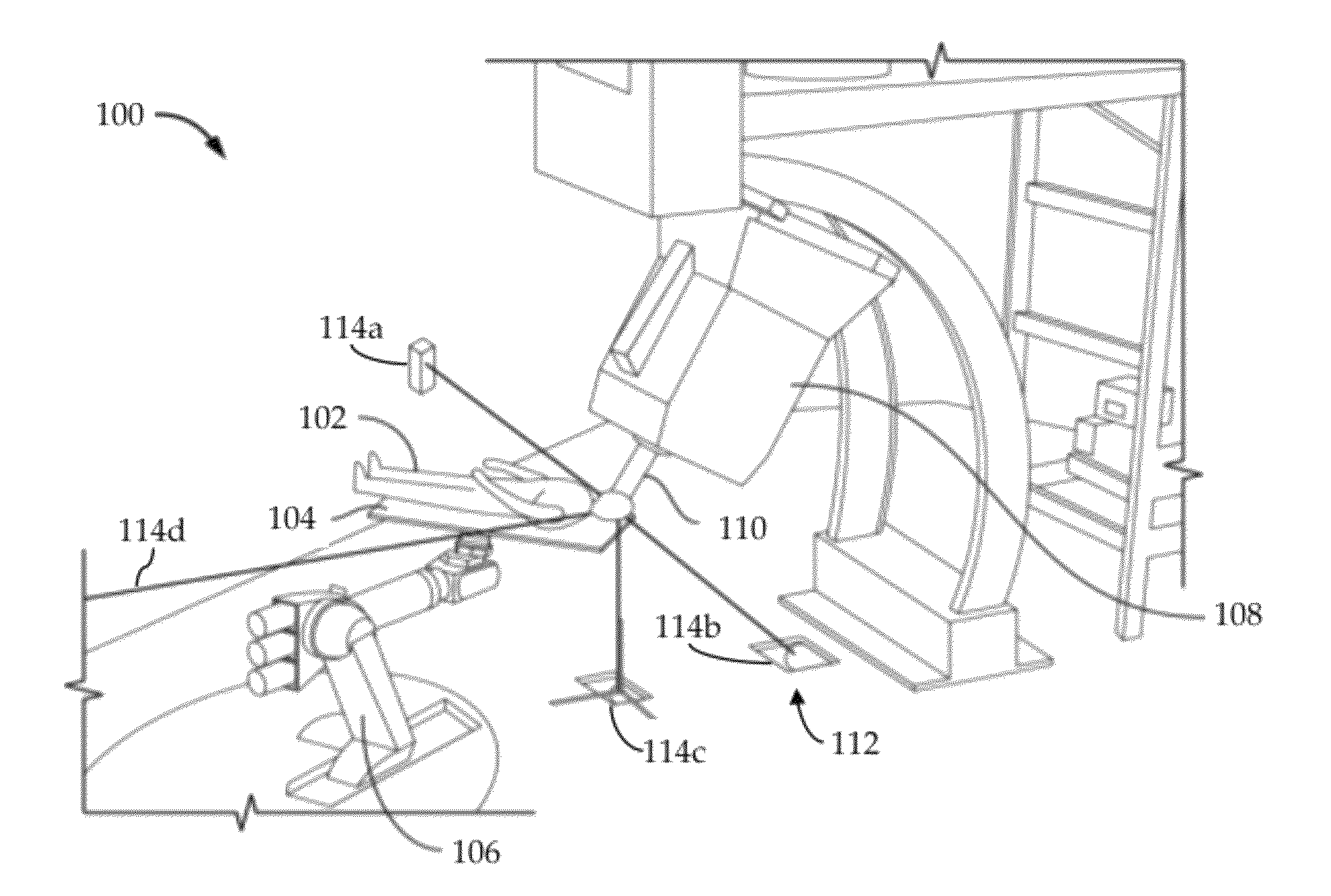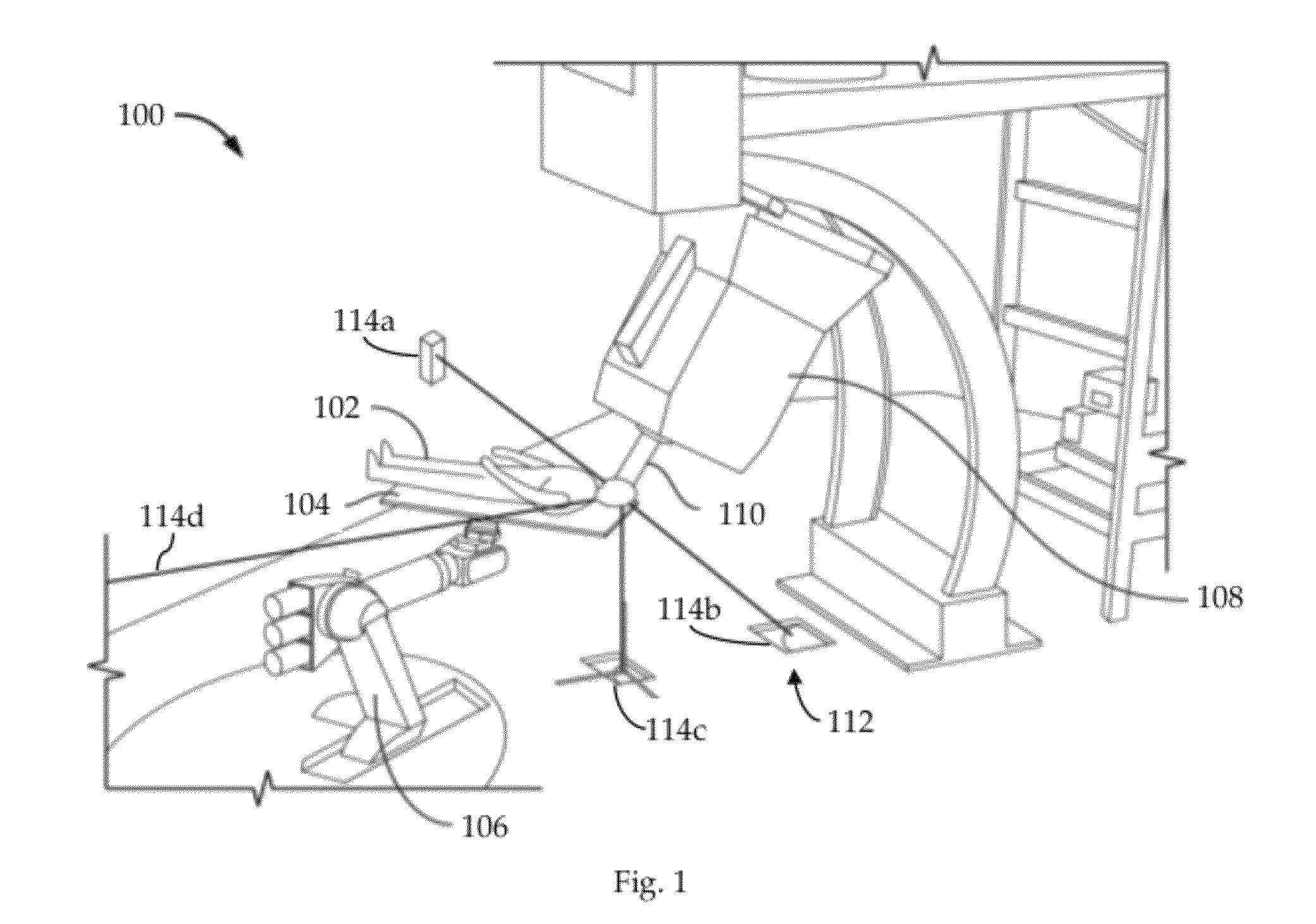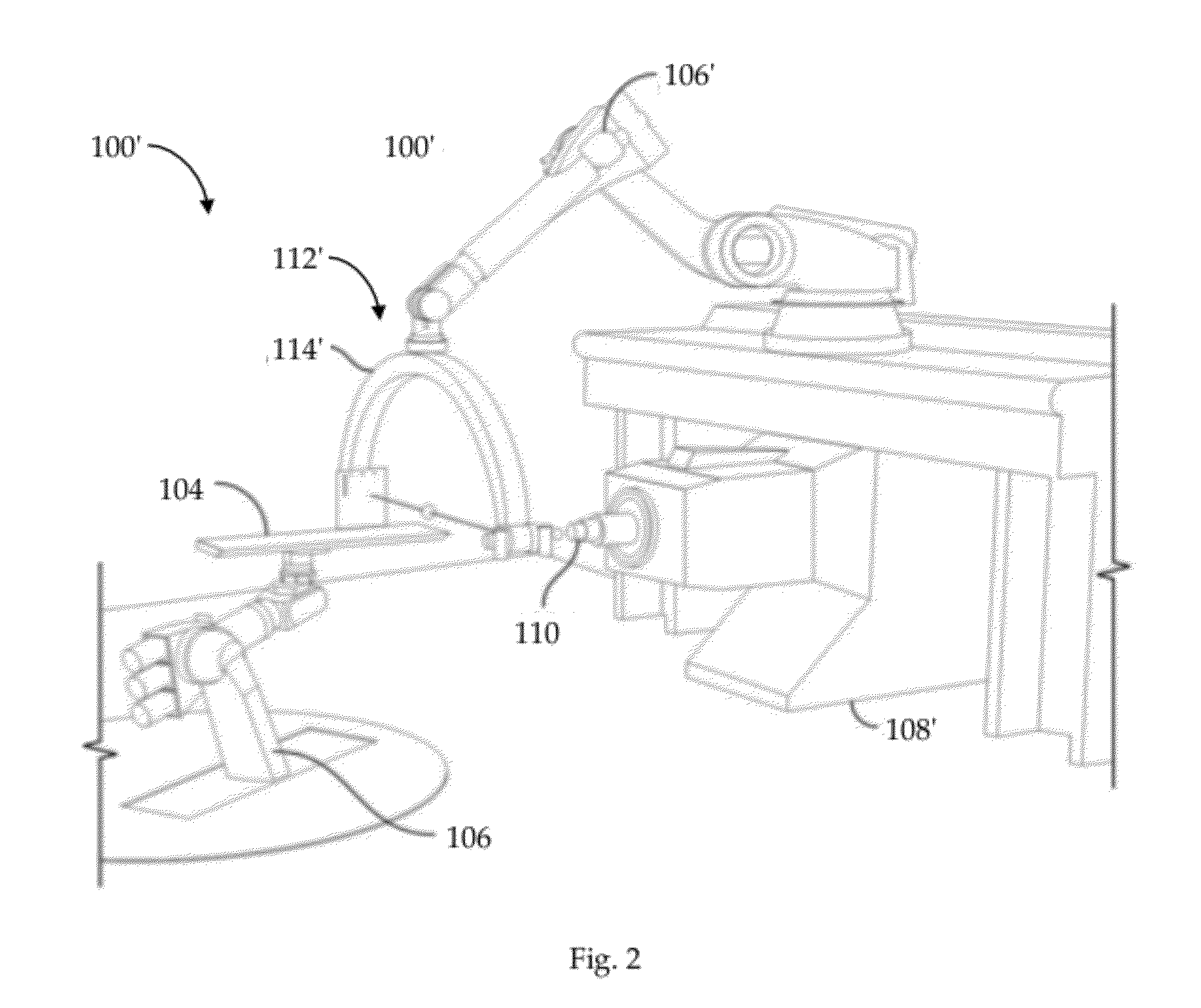System and method for robot safety and collision avoidance
a robot safety and collision avoidance technology, applied in the field of robot control, can solve the problems of unanticipated intrusion of robots, large perimeters that have to be established, and consume valuable factory space, so as to avoid undesired collisions, and improve the safety of industrial robots
- Summary
- Abstract
- Description
- Claims
- Application Information
AI Technical Summary
Benefits of technology
Problems solved by technology
Method used
Image
Examples
case 1
[0048] A rectangular link with all angles between different faces of the link being 90° as shown in FIG. 9a. For the top face of the link, first fit a square to the FOV of the sensor (located at the center as indicated by the small circle) at the appropriate depth, d, as shown in FIG. 9b; each side of the square will, therefore, be of size w, where w=sqrt(2)*d*tan(θ / 2). For sensor placement purposes, I will assume that each sensor will detect an intrusion at distance d and w×w area. Assuming the length of the face of the illustrated robot link is lr and width is wr the maximum distance between any two sensors can be d. This will provide full coverage of the given face of the robot link as shown in FIG. 9c. Assuming that n1 is the number of sensors placed along the length of the robot link, then:
nl>lr / (2*w).
Similarly, if nw is the number of sensors placed along the width of the robot link, then:
nw>wr / (2*w).
The same method of sensor placement, when applied to each face of the rectangu...
case 2
[0049] A rectangular link where the angle between any two faces may not be 90° as shown in FIG. 9d. FIG. 9e illustrates a side view of one surface of this link having an angle, Sangle , greater than 90° between two adjacent, contiguous faces. As Sangle decreases, e.g., as a result of a joint rotation, any two sensors that are mounted at the edge interface between the two faces will tend to move away from each other, requiring that additional sensors (indicated by arrows as shown in FIG. 9f) be placed along the joint to maintain full coverage.
[0050]With reference to the illustration of FIG. 9g, the number of edge sensors that will be required to get full coverage can be computed as:
No. of Edge Sensors>=(180−ø−Sangle) / ø
[0051]where: ø=2*arctan(tan(θ / 2) / sqrt(2))
case 3
[0052] Cylindrical link. In the case of a cylindrical link, the placement along the length of the cylinder will be similar to that along the length of a face of a rectangular link; the placement along the circumference of the cylinder requires a different formulation. Shown in FIG. 9h is the cross section of a cylinder of radius r with a representative placement of proximity sensors around it. In general, the proximity sensors are placed regularly around the circumference of the cylinder at an angle, α, with respect to each other. The value of α that would provide full coverage of this cross-section of the cylindrical link can be computed as:
α=2*arctan((d*tan(θ / 2)) / (d+r)).
PUM
 Login to View More
Login to View More Abstract
Description
Claims
Application Information
 Login to View More
Login to View More - R&D
- Intellectual Property
- Life Sciences
- Materials
- Tech Scout
- Unparalleled Data Quality
- Higher Quality Content
- 60% Fewer Hallucinations
Browse by: Latest US Patents, China's latest patents, Technical Efficacy Thesaurus, Application Domain, Technology Topic, Popular Technical Reports.
© 2025 PatSnap. All rights reserved.Legal|Privacy policy|Modern Slavery Act Transparency Statement|Sitemap|About US| Contact US: help@patsnap.com



